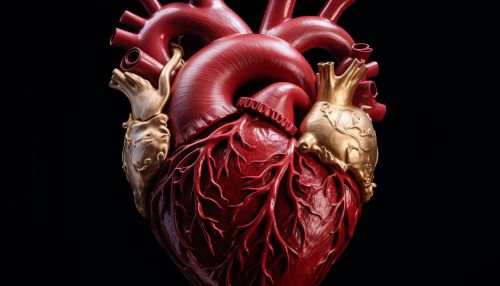Ventricle (heart)
Anatomy and Structure
The human heart is divided into four chambers: two atria and two ventricles. The ventricles are the lower two chambers of the heart, and they play a crucial role in the circulation of blood throughout the body. The right ventricle pumps deoxygenated blood to the lungs through the pulmonary artery, while the left ventricle pumps oxygenated blood to the rest of the body through the aorta.


Function
The primary function of the ventricles is to pump blood to the lungs and the rest of the body. The right ventricle receives deoxygenated blood from the right atrium and pumps it to the lungs for oxygenation. The left ventricle, on the other hand, receives oxygenated blood from the left atrium and pumps it to the rest of the body. The contraction of the ventricles is known as systole, and their relaxation is known as diastole.
Physiology
The ventricles are composed of myocardial muscle tissue, which allows for the strong contractions necessary to pump blood. The walls of the left ventricle are thicker than those of the right, as it needs to generate more force to pump blood to the entire body. The inner surface of the ventricles is lined with a layer of endocardium, which prevents blood from sticking to the walls and forming clots. The ventricles also contain specialized cells known as Purkinje fibers, which help coordinate the contraction of the ventricles.
Diseases and Conditions
There are several diseases and conditions that can affect the ventricles, including ventricular hypertrophy, ventricular fibrillation, and heart failure. Ventricular hypertrophy is a condition in which the walls of the ventricles thicken, reducing the amount of blood they can hold and pump. Ventricular fibrillation is a serious condition in which the ventricles quiver instead of contracting normally, leading to a severe reduction in blood flow. Heart failure can occur when the ventricles are unable to pump enough blood to meet the body's needs.
Treatment and Intervention
Treatment for conditions affecting the ventricles varies depending on the specific condition and its severity. Medications, lifestyle changes, and in some cases, surgery may be recommended. For example, ventricular hypertrophy may be treated with medications to lower blood pressure and reduce the workload on the heart. Ventricular fibrillation often requires emergency treatment with a defibrillator to restore normal heart rhythm. In cases of severe heart failure, a ventricular assist device may be implanted to help the heart pump blood, or a heart transplant may be considered.
